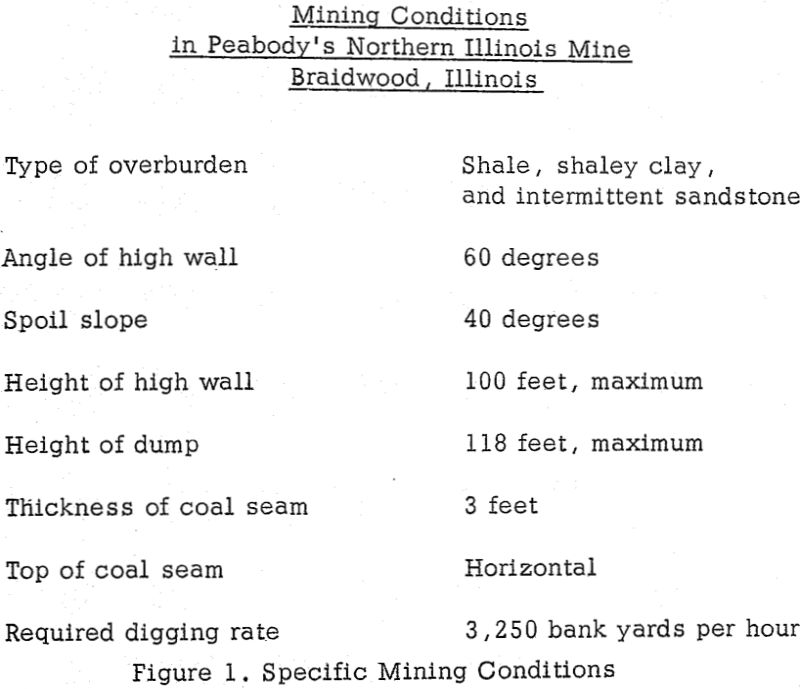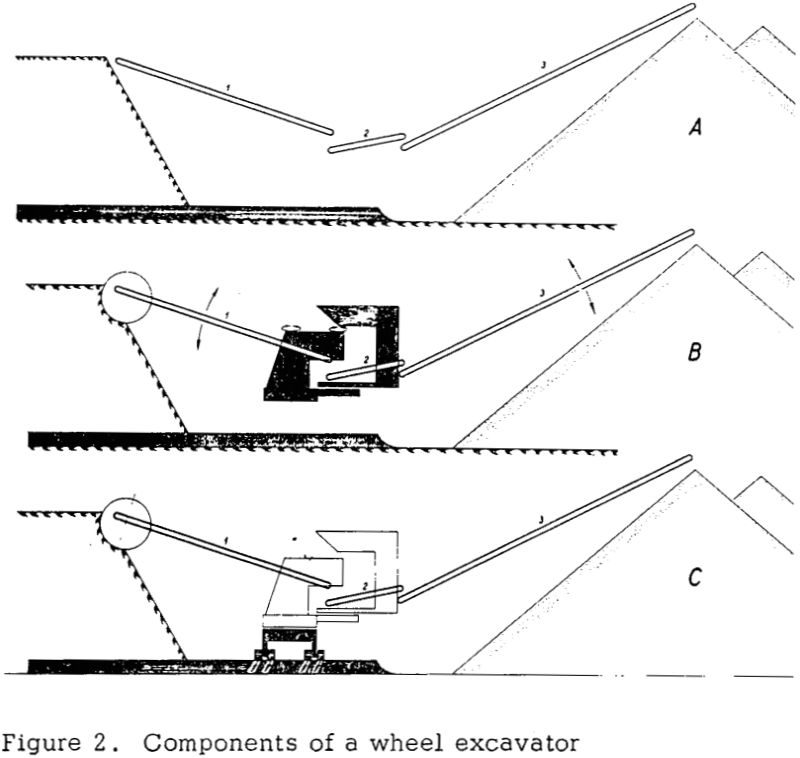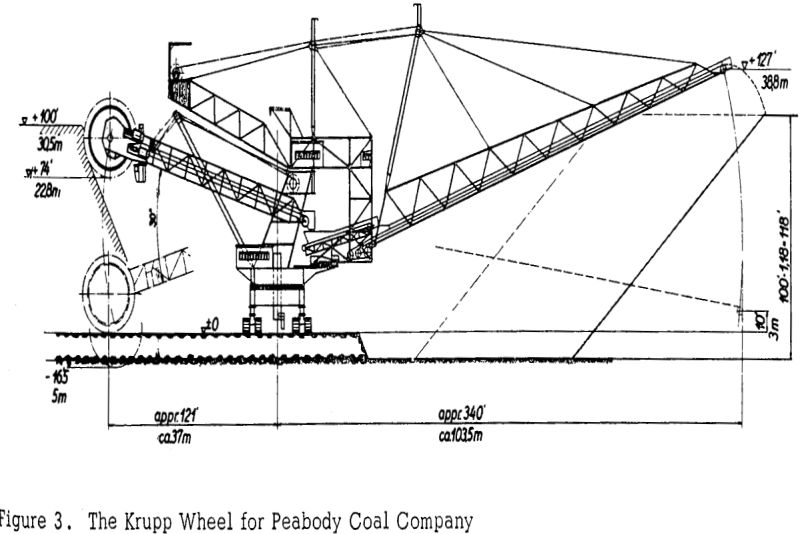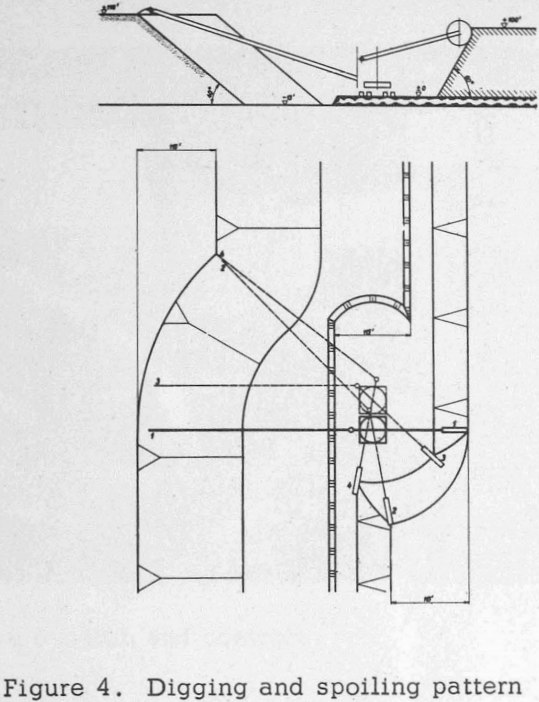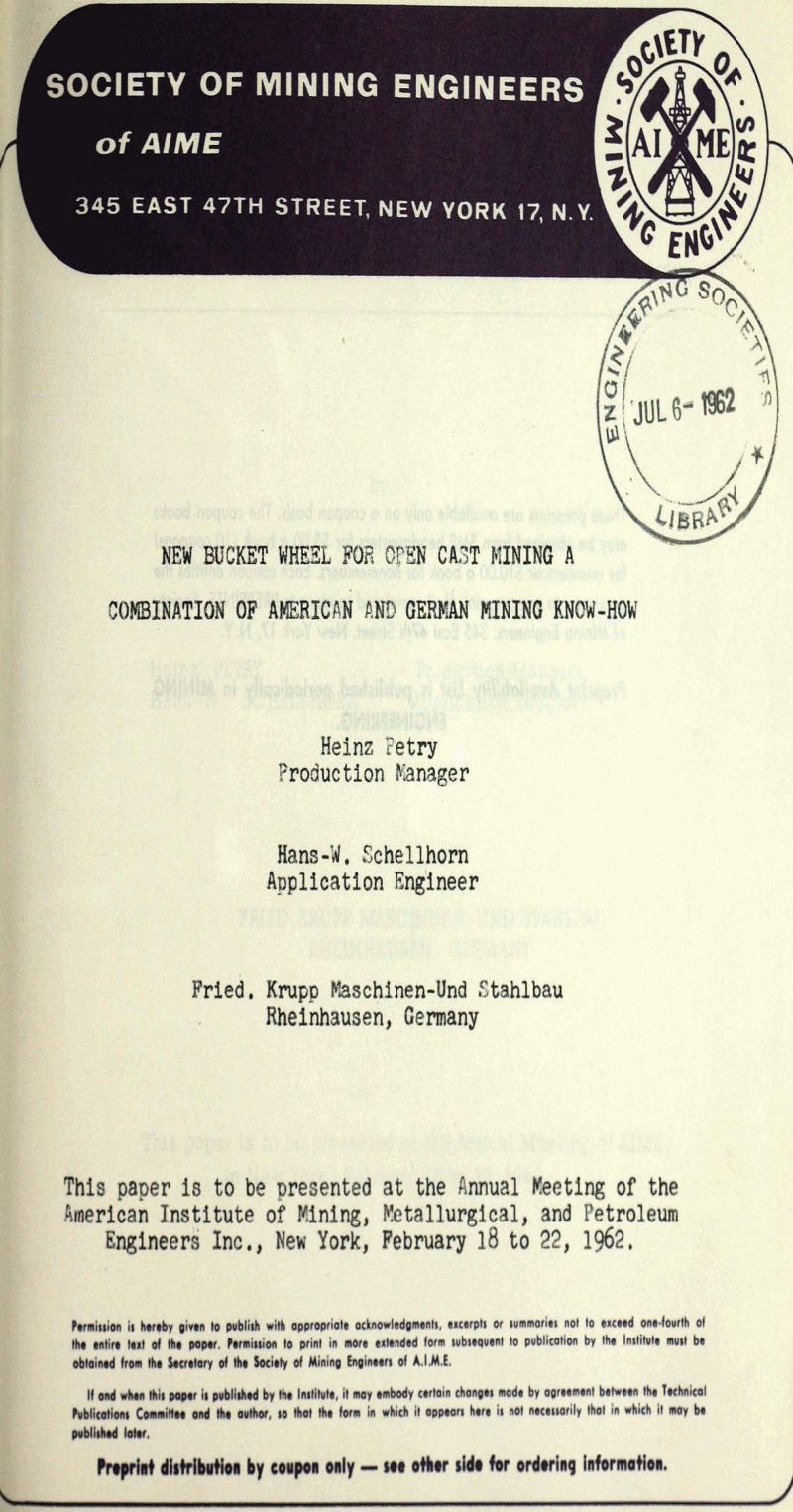Table of Contents
In deep strip mines the job of moving overburden may be so much bigger and more costly than the removal of coal or ore that the operation is often called dirt mining. Constant improvement in stripping machines and techniques of using them is needed to offset rising costs and to increase production in mines that are now operating, and to make it economically possible to work deeper or thinner deposits.
Wheel Excavator Design
This paper is presented to describe a new wheel excavator that is designed to increase the efficiency of strip mining by making possible deeper and wider cuts, while keeping costs at or below present levels. The wheel is to be assembled this year in the Northern Illinois Mine of the Peabody Coal Company, where it will handle 100 feet of unblasted overburden, most of which is shale with intermittent thin beds of sandstone.
The wheel excavator takes full advantage of the high efficiency of direct transportation by conveyor belt. The upper drawing shows the schematic arrangement of three high speed, steel-reinforced belts that move material from the high wall to the spoil pile. The other two drawings show the main structural parts of the machine: the crawler mounted base, the centrally mounted and fully revolving primary superstructure, to which is hinged the 140 foot wheel boom, and the eccentrically mounted secondary frame supporting the stacker boom.
Control Cab
The control cab is mounted in an elevator on the right side of the digging boom, near the wheel. The operator can move it up or down for convenience in watching the cut. All functions of the machine, including travelling and steering can be controlled from the cab by one man.
Some of these functions, however, are interlocked electrically. For instance, the wheel will not start rotating until all belts, beginning with the stacker belt , are running at speed. In shutting down operation, the wheel itself will stop first, the belts following in succession. If this were not done congestion would result at transfer points.
Operation
As it advances it leaves a new high wall on its right, in the direction of mining, and piles spoil in the mined out area in its previous cut. Digging is done by rotating the wheel, swinging it from side to side in long arcs, and advancing it into the bank by travel of the whole machine ( bench cut) or by lowering the boom ( falling cut ). Both methods will be discussed below.
Modern stripping machinery generally excavates in blocks. For the wheel excavator described here, a block is measured by the width of the cut, its height from the floor to the top, and the horizontal depth of cut behind the face. This depth depends on the reach of the wheel boom and the slope of the face. Considering a benching operation, a block may consist of 4 benches containing a total of 20 ,000 bank yards. Excavating time for each block is about 280 to 460 minutes.
This cut is started by moving the machine forward to a position in which the wheel can cut a thin vertical slice as the boom is swung in an arc between the old high wall and the new one. As the wheel reaches the end of its cutting arc the whole machine is moved forward on its crawlers so that fresh material can be reached during the return swing. A new advance is made at the end of each swing in either direction, without stopping the wheel or changing boom height, until the tracks reach the toe of the bank or the bottom of the boom almost touches its edge.
